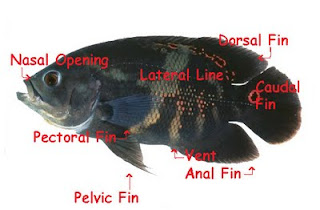Our Facebook Page to Follow: Aquarium/Pond Answers Facebook
This is a unique resource for answers, help, & advice to aquarium and pond questions not found elsewhere; With regular posts & article updates.
In our research; we use aquaculture, horticulture, medical, & university research to compile many of our articles.Our Recommended Lighting for highest efficiency professional planted/reef aquariums: "AquaRay Lighting"
Fish Anatomy, Fin Identification
This Aquarium Answers Post is simply for fish fin and fish anatomy identification.
The pictures can apply to most fish kept in freshwater and saltwater with the exception of Sharks, Rays, and Skate.
By Carl Strohmeyer-PAMR 40+ years experience
Updated 1/17/19
The first picture is of the anatomy of a bony fish (an Oscar).
Please Click on the picture to enlarge for a better view
Details include:
- Brain: Center of mental faculties of a fish.
- Esophagus: Part of the digestive tract connecting the mouth to the stomach.
- Dorsal aorta: Vessel in the back that carries blood from the heart to the organs.
- Stomach: part of the digestive tract between the esophagus and the intestine.
- Air bladder: Organ that regulates buoyancy in the water.
- Spinal cord: Nervous system part that connects the brain to the rest of the fish’ body
- Kidney: Blood-purifying organ. Common site for infections including dropsy
- Urinary orifice: Opening for urine elimination
- Genital Orifice: opening related to the genital organs.
- Anus: end of the digestive tract.
- Gonad: hormone-secreting sexual gland of a fish.
- Intestine: final stage of the digestive tract.
- Gall bladder: Small sac containing the bile for digestion
- Liver: Bile-producing digestive gland.
- Heart: Blood circulatory organ.
- Gills: Respiratory organ of a fish.
- Eye: Fish sight organ
- Olfactory bulb: Prominent part of the smell organ of smell of a fish.
- Pyloric cecum: Dead end related to the intestine.
ADVERTISEMENT
The second Picture is of the names of fish fins and lateral line also using an Oscar (Cichlid).
Please Click on the picture to enlarge for a better view
This includes:
- Pectoral fin
- Anal Fin
- Pelvic Fin
- Caudal Fin (tail)
- Dorsal Fin
- Lateral Line
- Nasal Opening
- Vent (anus)
Here is a picture of a Catfish for an example of adipose fins and barbels:
Please Click on the picture to enlarge for a better view

Here is a picture of Puffer Anatomy (note that this is an animated picture):

Aquarium Medications Facts & Information
Other Recommended Reference & Product Sites

Freshwater Aquarium Care; Basics to Advanced
Aquarium Information, Articles

Planted Aquarium Care
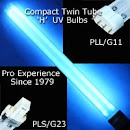
UV Bulbs
Premium UV-C Replacement Bulbs/Lamps to keep your UV Sterilizer at peak performance for Aquarium & Pond Disease Prevention, Redox Balance, and Green/Cloudy Water Control.

TMC New Generation Fluidized Sand Bed Filter
Premium, second to NONE Aquarium Bio Filters, that with optional Oolitic Sand, also maintains essential aquarium calcium levels, alkalinity, & electrolytes that are important to ALL Marine life, Goldfish, African Cichlids, Livebearers & more
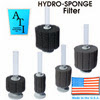
Aquarium Sponge Filters by ATI & AAP
The Premium ATI Hydro Sponge Filter, from the only online seller with professional use dating back to 1978 (prior to the Internet)
*Sponge Filtration; How Sponge Filters Work
Aquarium Chemistry; Complete Basics to Advanced
ADVERTISEMENT
Labels: Anal Fin, Boby Fish, Caudal Fin, Dorsal Fin, Fins, Fish Anatomy, Fish ID, Fish Kidneys, Fish Olfactory bulb, Fish Vent, Lateral Line, Pectoral fin, Pelvic Fin, Pyloric cecum
Plaster of Paris, Gypsum, or Tums; Use in Aquariums, Ponds
By Carl Strohmeyer-PAMR 40+ years experience
Updated 1/22/19
THE DIFFERENCE BETWEEN PLASTER OF PARIS AND PRODUCTS SUCH AS WONDER SHELLS OR SEALAB
I have read in many places about the use of Plaster of Paris (& occasional Tums too??) as a mineral source for both ponds and freshwater aquariums.
I too have used this many years back when old timers in the hobby suggested its use for ponds to me, however with the exception of a calcium emergency or possibly to absorb pollutants in a pond in bulk, which I have used Plaster of Paris for; Plaster of Paris is not the same as Wonder Shells, SeaChem Replenish, Sealab blocks, or similar products designed for aquarium use to add major and minor elements required by ALL fish, both fresh & saltwater.
Product Resources:
*Wonder Shells (Best Method as it adds mineral Cations constantly and is more complete)
*SeaChem Replenish
My own years of use have shown me the vast difference in fish health and vitality.
In this article I will hopefully explain this a little more scientifically.
ADVERTISEMENT
PLASTER OF PARIS:

Plaster of Paris is manufactured by heating gypsum at 120 - 160 C. When Plaster of Paris is mixed in water it dehydrates and forms dense matrix of gypsum crystal.
Here is a list of ingredients of Plaster of Paris:
- CaSO4, 1/2H2O: 97.97%
- SiO: 0.94%
- Al2O3: 0.69%
- Fe2O3: 0.28%
- MgO : 00.12%
What I see here is some Magnesium Oxide, Iron, Sulfur, Aluminum, Silica and mostly Calcium Sulfate.
Where is the Strontium, the Sodium, Potassium and more?
These ratios are also NO WHERE near correct for proper assimilation.
This is not to say that products such as Wonder Shells or Kalkwasser are also spot on in these ratios, however they are much closer than this.
This is also why Marine Buffer by SeaChem is better for KH control as the proper ratios are applied in this product.
It is also noteworthy that Calcium Sulfate (Gypsum) is not the best source for Calcium in a “living” aquarium environment.
Calcium Hydroxide (Kalkwasser), Calcium Carbonate, or Calcium Gluconate (the calcium salt of gluconic acid, an oxidation product of glucose) are MUCH better sources for calcium in a LIVING aquatic environment.
In plant and animal studies, calcium chloride and calcium sulfate (found in Plaster of Paris), have been known to cause problems, however the problem is generally associated with the anions Cl- or S04 rather than calcium which is a necessary nutrient for plant and animal life and even in high amounts is safe by itself or in the other forms I recommended earlier in the paragraph.
Calcium sulfate is also a poor source of ESSENTIAL positive mineral ions (cations), this may be in part due to the -SO4 anions present in CaSO4 (Calcium Sulfate). This is an important difference since the aquatic environment already produces many Anions, we need Cations to balance this out or fish health will eventually suffer!!
Reference: Aquarium Redox
Calcium Sulfate (Gypsum) also does not react with acids which is important in our aquatic environment for maintaining a healthy balance of Redox, as well as generating CO2 for plants.
There is also a lot of mis-understanding in the aquarium community as to how VERY important bio-available calcium is, again Calcium Hydroxide, Calcium Carbonate, Calcium Gluconate; NOT Calcium Sulfate found in Plaster of Paris.
Calcium is a very important mineral/electrolyte for so many body functions such as muscle contraction which is initiated by a sudden increase in calcium concentration in the muscle cells.
Calcium is also important in times of stress, which is why a new fish added to aquarium that has poor bio available calcium is very likely to get sick and often the aquarist blames the opportunistic disease rather than realizing that the fish may be suffering form the lack of electrolytes such as calcium.
Another ingredient found in Plaster of Paris is Silica; this mineral can cause algae problems (especially brown) and is especially troublesome in marine aquariums.
Plaster of Paris is also a poor choice for GH or Calcium as Calcium needs to be in the proper ratios with other elements such as Magnesium to be utilized by aquatic life (such as osmotic function).
PROPER OCEAN CHEMICAL ANALYSIS:
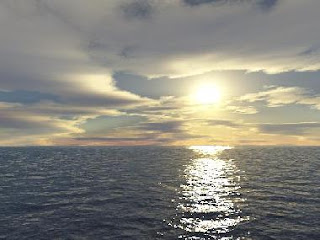
By contrast here is the chemical composition of the ocean as a percentage:
- Chloride- 55.03%
- Sodium- 30.59%
- Sulfate- 7.68%
- Magnesium- 3.68%
- Calcium- 1.18%
- Potassium- 1.11%
- Bicarbonate- 0.42%
- Bromide- 0.19%
- Borate- 0.08%
- Strontium- 0.04%
- Fluoride- 0.003%
- Other- less than 0.001%
It is important that we try and achieve at least some balance when adding minerals back into our aquariums. This ocean water composition is easily extrapolted over to freshwater with simply lower numbers and of course much less sodium & chloride.
When you add products not intended for mineralization of water containing fish or other aquatic life such as plaster of paris or Tums, you are simply screwing with your long term aquarium chemistry and aquarium health.
For more about Calcium, Electrolytes in aquariums, please read this article:

CALCIUM, KH, AND MAGNESIUM IN AQUARIUMS
TUMS IN AN AQUARIUM
Although I have not used Tums in an Aquarium (although friends in the industry have tested Tums with poor long term results), I know enough about aquarium chemistry to know that the calcium carbonate that makes up this product are NOT a complete/balanced mineral source. For all the essential positive mineral ions fish require, and despite some forums that recommend the use, it is quite obvious from reading material already cited earlier in this article that Tums should not be used either.
The result is a lack of balance in aquarium chemistry (such as magnesium).
As well, Tums have other added ingredients to add flavor, maintain freshness, add color, etc that have no business in your aquarium.
RELATIONSHIP BETWEEN OCEAN WATER AND INTERNAL CHEMISTY OF ANIMALS:
I brought up ocean water chemical analysis to make a point that is the plasma and internal chemistry of all animals and fish are similar in composition to the ocean. This is why many electrolytes (elements) are important in the chemistry of aquarium environment including fish food.
Rene Quinton is a scientist who died in 1925.
"He postulated that from the mineral point of view, human and marine plasmas are environments of the same nature. In other words, there is physical and physiological identity between seawater and the internal environment of the organism.
Not only do they exhibit very similar mineral compositions, but the particular form, organization and synergy of trace elements and mineral salts that make up the saline matrix of seawater closely resemble those of the internal environment constituents."
Reference:
www.oceanplasma.org/
For more about proper Osmotic Function in fish, pleas see this article:
PROPER OSMOTIC FUNCTION
SUMMARY;
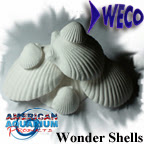
Basically my point is that all you add to your aquarium (freshwater or saltwater) should emulate this ocean ratio as close as possible. In saltwater, fish are constantly drinking the water around them for proper hydration and osmotic function so they are very sensitive to their water chemistry.
In freshwater the fish are absorbing the water around them for hydration and osmotic function so they are less sensitive to poor water chemistry, this said, that is why you can often get away with dumping Plaster of Paris in freshwater Aquariums or ponds.
This in NO way means you are providing the proper electrolytes your fish need. Using products such as Sea Chem Buffer, SeaChem Replenish, or Wonder Shells are more likely to achieve a better balance here.
Besides, why would you want to throw a product in your aquarium manufactured by heating gypsum?
References:
*Wonder Shells (Best Method as it adds mineral Cations constantly and is more complete)
SeaChem Buffers
SeaChem Replenish
Other Recommended Reference/Product Sites

Aquarium Information and Resources (Pond too)
*
Aquarium & Pond UV Sterilization; Facts & Information
*For TRUE low pressure, hot cathode Germicidal UV Replacement Bulbs:
UV Bulbs; For Aquarium, Pond, Purifier

Complete Pond Care
*
Aquarium (or Pond) Nitrogen Cycle
*For a friendly, Knowledgeable, aquarium forum with in a family atmosphere:
Aquarium Forum; Everything Aquatic

Spirulina 20 Fish Food Flake
The best balanced fish flake food diet for Tetras and other fish for disease prevention/p>
TMC V2 RO Filter systems; the very best you can buy with TDS meter (far superior to 4 stage RO/DI systems sold via Bulk Reef Supply, Amazon, or eBay that use the inferior cellulose triacetate membrane made by Dow):
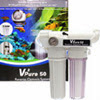 Reverse Osmosis Aquarium Water Filters; with TDS Meter
Reverse Osmosis Aquarium Water Filters; with TDS Meter
*Parasite Retailers, Pet Mountain, Amazon
The best in Quartz, Under gravel, and Titanium Submersible Heaters:
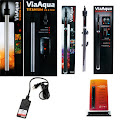
Aquarium Heaters
ADVERTISEMENT
Labels: Aquarium GH, Aquarium Minerals, Boby Fish, Fish GH, Gypsum, Gypsum aquarium, Plaster and Fish, Plaster of Paris, Pond Minerals, Tums Aquarium
Dropsy in Fish; Swollen Betta, Kidney Infection, Osmoregulation
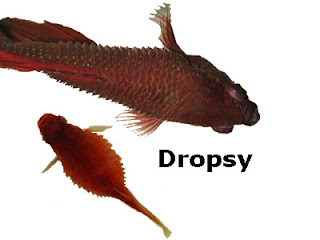 DROPSY in fish; prevention, causes, and possible treatment of this malady that is often a symptom of other problems.
DROPSY in fish; prevention, causes, and possible treatment of this malady that is often a symptom of other problems.
By Carl Strohmeyer
Updated 11/24/21
BACKGROUND:
I've been professionally treating many fish diseases, conditions & syndromes since 1978.
Dropsy is a condition I've treated for clients many times over the decades and discussed with other leading professionals at seminars too often at seminars and industry trade shows.
What is Dropsy?
Dropsy is basically a "Condition" or "Syndrome".
In other words a symptom with many causes, often a mix of causes such as diet, osmoregulation, bacterial pathogens such as Aeromonas and generally affecting the kidneys.
As noted, most often Dropsy is Kidney related, which results in swelling and fluid retention due to poor kidney function results in the classic "pinecone" look of fish sick with Dropsy.
Poor osmoregulation is usually the second most common cause, followed by diet, and in more rare instances digestive, and maybe liver malfunction/infections.
Often it is a combination of infection of the kidney, poor osmoregulation (including oxidative stress), and poor diet (which often is the result of too high energy levels and poor protein optimization).
The loss of ability for osmo-regulation of electrolytes is often a contributing cause, which is another reason for correct positive mineral ion and trace element levels.
Please see these two articles:
*Aquarium Chemistry; Calcium, Electrolytes, GH, KH, & more
*Do Fish Drink; Proper Osmotic Function .
COMMENTARY:
Sadly a person who may or may not have some expertise is posting on YouTube video comments (including AAPs channel) touting his experience with API (a known discounter of limited aquarium medications, certainly not a seller of higher end pharmaceutical grade products such as Aquatronics or SeaChem).
He attacked my experience and expertise on this subject calling it "True Dropsy" when in fact the industry has NEVER considered Dropsy a "True" disease (which is why I doubt his so called expertise and believe he is more likely an internet troll that are so common of late trying to make a name for himself posting on many YouTube channels dealing with this subject).
He also stated that True Dropsy is not curable. Well, since Dropsy is actually a condition and not a true disease per say (example would be Septicemia in fish which is also a condition with many possible causes), some causes of Dropsy can and as a MATTER OF FACT have been cured when caught in time. Unfortunately some causes are indeed incurable no matter what one does for their fish, and even if caught early on.
This is also why prevention (as you will read later in this article) is key, as I had very few cases of Dropsy of ANY cause when certain procedures were followed.
Generally due to the cause or area of infection (or organ failure), Dropsy can often be very difficult to treat, especially if caught in an advanced case in the fish (usually in advanced stages euthanasia is your best choice).
What the aquarist often observes is a “pinecone” swelling generally caused by fluid building inside the body cavity (often involving the Kidneys), for this reason, reducing this swelling is an important step in effecting a cure.
I have heard of Minocycline also being recommended for this (although it can be effective). I do not recommend this as Minocycline has been shown to cause serious damage to the kidneys, which is the last thing you want to do to a fish suffering from Dropsy or even suspected of this malady.
Information on Minocycline:
Use of Minocycline, Maracyn 2 for fish treatment
I would also note that since Aeromonas bacteria is a common cause of infections (along with the parasite Mitraspora cyprini, more commonly found in pond fish) that result in Dropsy and since this bacterium is often anaerobic; maintaining good circulation, aeration and overall good tank hygiene goes a long ways in treatment and even further for prevention (since Dropsy is difficult to treat and cure).
Please read more about optimum tank conditions in the prevention section further into this article, as I have been able to prevent Dropsy much more successfully (as per controlled tests) than actually treat a full blown case of Dropsy!.
Sometimes liver issues are blamed for Dropsy, which is certainly possible, however liver malfunction and infections generally do not result in the classic "pinecone" Dropsy appearance, rather the fish may bloat slightly and almost always results in loss of color, loss of appetite, and the fish tends to hide more.
One of the functions of the liver is to remove toxins and this is why the symptoms I describe are more prevalent with liver issues.
Generally if liver problems are the cause, successful treatment is rare
Other issues blamed for Dropsy include swelling for egg impaction, swim bladder issues, Mycobacterium Tuberculosis, & Costia.
However, while the later two in particular can be similar, based on my decades of practical experience dealing with Classic Dropsy these still do not produce the classic symptoms and more importantly treatment is quite different.
This said, besides treatment for a possible underlying infection, you want to take steps to remove the swelling.
ADVERTISEMENT
Here are the steps I would take to have chance at defeating the causes of Dropsy in less advanced stages.
ALL STEPS ARE IMPORTANT, Skipping even a couple lowers effectiveness considerably.
These steps apply to ALL fish, not just Bettas.
Success rate from my experience when ALL steps are followed (which is in the 100s of cases) is about 50%. But I must qualify this by stating that in cases where the fish is not eating and non responsive is closer to ZERO while in cases where the fish is responsive, eating and otherwise doing relatively well is much higher than 50%,
- Change water! (25% should be fine)
- Perform a medicated bath with Methylene Blue and AAP Naladin (Naladixic Acid), OR Metronidazole, OR Kanamycin, OR Sulfathiazole.
To prepare this bath I use double dose of Methylene Blue/MethyBlu that would be called for in a direct aquarium applications in a bath of aquarium water from the tank the fish you wish to treat came from, I usually use about a ½ gallon of water, however you may use less.
Measurement of the Methylene Blue does not need to be precise as this bath should be used for about 30 minutes.
Make sure you keep the water in a warm area, as in a cold room the water temperature can drop rapidly which would stress the fish.
Please Read:
*Medicated Fish Baths
As to the previously noted antibiotics or Sulfa Based Drugs (such as Sulfathiazole or Maracyn Plus), I GENERALLY have used twice the recommended in tank strength in these baths of the before mentioned medications (Metronidazole, etc.) with the possible exception of Kanamycin.
Keep in mind that Kanamycin, while not as toxic to kidneys as Minocycline, it is still toxic, yet is also very effective for infections of the kidneys! The point being is use with caution and do not use in the main aquarium, only in baths when fish have Dropsy so as to keep the exposure time low but effective (hence the double strength treatment in the short duration of a bath).
Recommended product links/references:
*AAP Methylene Blue
*AAP Premium MethyBlu
*AAP Naladin (Naladixic Acid)
*AAP/SeaChem Kanaplex
*AAP/Mardel Maracyn Plus
*AAP SulfaPlex Sulfathiazole
I STRONGLY recommend the use of salts in this bath as well at about double the normally used tank strength; 1-2 teaspoons sodium chloride (regular salt) per gallon and 1/8 to ¼ teaspoon Epsom salt per gallon of bath water.
Further Reading about sodium chloride salt use:
Salt/Sodium Chloride use in Freshwater Aquariums
Do NOT pour this water back into your display aquarium when finished!
This can be performed twice per day.
For further information (more in depth) about fish baths, please read this article:
Fish Baths/Dips for supplemental (& even primary) treatment of Bacterial infections - Add one tablespoon of regular salt (sodium chloride) per 5 gallons of aquarium/tank water or even 1 teaspoon per gallon if the fish will tolerate this (NOTE, this second dose is TEAspoon, NOT tablespoon.
Add a FRESH AAP Wonder Shell or similar product to add needed calcium and mineral cations (beware that the Wonder Shells sold via Amazon and other discounters are not only not an authorized product, but they are not fresh either, so the benefit of redox improving mineral Cations are lost).
What these minerals will do is add electrolytes and change (and improve) the osmotic balance of the fish vs. the surrounding water to hopefully pull fluids thru the body thus reducing swelling. Basically we are attempting to duplicate the balance osmotically with the fish' blood which is .9% salt
For more about electrolytes, please read this article: Aquarium Chemistry; Why calcium and electrolytes are important - Treat tank water with Kanamycin (Kanaplex), or possibly with Neomycin or AAP Naladin (Nalidixic Acid).
Also consider feeding the infected fish with fish food soaked in Neomycin such as Neoplex along with in tank treatment of Kanamycin (hospital tank is best).
Then add a Medicated Wonder Shell to the holding/hospital aquarium.
Other treatments of note are Minocycline (Maracyn II) and Metronidazole (SeaChem makes an excellent pure Metronidazole).
Further Reading: *Use of Kanamycin, Kanaplex in Aquariums, Ponds
Additional recommended product links/references:
*SeaChem Neoplex (Neomycin)
*SeaChem Metronidazole
Generally, a “cocktail” approach with more than one medication is necessary for "Classic" kidney related Dropsy, such as Kanacyn and Metronidazole OR Neomycin along with a Medicated Wonder Shell together (and this still includes the baths!!).
Please note that combining Metronidazole with Neomycin does not improve results, so this "cocktail" combination should ONLY be with Kanamyacin with EITHER Neomycin or Metronidazole along with a Medicated Wonder Shell.
OR just AAP Naladin (Nalidixic Acid) ALONG WITH a Medicated Wonder Shell! In fact Naladixic Acid is specific to kidney/urinary tract infections, so is an excellent choice for many of not most Dropsy causes!!
Sometimes the bath as prescribed earlier along with Kanamycin & a Medicated Wonder Shell is just enough to affect a cure (assuming a cure is even possible).
If Mitraspora cyprini is the root cause, the cocktail is more effective with either Naladixic Acid or Metronidazole being one of the "ingredients".
The advantage of using the AAP Medicated Wonder Shell™ is this is the only fish medication that combines medications that oxidize, all the while providing Redox reducers to fight oxidative stress, which with kidney and fluid retention problems is an important factor to consider.
Product Resources:
Medicated Wonder Shell
AAP Naladin (Naladixic Acid)
Sometimes raising water temperature to 82-84F can help, in particular if the cause is primarily osmoregulation. However if a bacterial pathogen is a part of the problem, this can actually make things worse.
Here is more info about aquarium medications:
AQUARIUM MEDICATIONS; treatments, how they work, and which ones to use and not to use - Another potential additional "natural" treatment that has been proven human use for digestive issue is Oregon Grape Root.
Suggested use is opening a 400 mg Oregon Grape Root Capsule into 10 gallons aquarium and/or fish bath water along with before suggested antibiotics.
For more about Oregon Grape Root use for aquarium/pond fish:
Aquarium Medications Part 4; Oregon Grape Root
PREVENTION:
The Aeromonas bacteria (that is often present in healthy aquariums) can cause infections that will manifest this way in poor water conditions, especially in aquariums with poor circulation and high amounts of DOC (dissolved organic compounds) along with a high "Bio-Load" as Aeromonas Bacteria can be anaerobic and thrive in low oxygen, high dissolved organics conditions.
Reference:
Aeromonas Infections in Fish
So maintaining a healthy aquarium with regular water changes, good filtration (if possible, as this is why I see more cases of Dropsy in Betta kept in a bowl), and maintaining optimum water parameters; Ammonia and nitrites 0, kH 50+ ppm, GH 100+ ppm, & nitrates under 40 ppm (the lower the better, so 20 ppm or less is better yet).
A water parameter that is often missed (as the more obvious ammonia and nitrites are usually noticed) is proper calcium and electrolytes (positive mineral cations). These mineral Cations help balance oxidative stress which can have an impact on Kidney function & fluid retention. This can be tested in rH/Relative Hydrogen Score with healthy aquariums should have a rH reading between 23 & 26
If RO or RO/DI is used (or drinking water that is nothing more than RO water with a few minerals added for “taste”), there are usually insufficient electrolytes and calcium for proper osmotic function and fluid retention can result, which will then lead to kidney infections. Make sure to properly re-mineralize if RO water is used
Please read these articles for more about this aspect of fish care:
*Proper Osmotic Function; Use of RO Water
*Aquarium Redox & rH
* AQUARIUM CHEMISTRY; The importance of Calcium, GH, KH, Magnesium to Fish
All this goes a long way in prevention of Dropsy and other diseases, especially when poor osmoregulation is the direct cause or even indirect cause of Dropsy.
By indirect I mean opportunistic infections getting a foothold internally in your fish due to poor levels mineral cations & buffers present in your aquarium water.
Use of true level one UV Sterilization..
Similar in benefits to mineral Cations, but not having a direct impact on osmoregulation, the use of level one UVC Sterilization lowers oxidative stress in the water column, which over time has a direct impact on fish health and longevity, including likelihood of issues that can result in Dropsy symptoms.
Reference:
*Aquarium/Pond UV Sterilization
A proper diet makes a large difference here.
Do not feed your fish "meat based" proteins. I recommend aquatic based proteins such as whole menhaden or white fish meal, shrimp or even the proteins found in spirulina algae.
As a basic Betta diet I recommend Sanyu or Hikari Betta Gold pelleted foods.
There are many other quality Betta foods as well, although I do not recommend flake foods for bettas as their staple diet.
However Flake Food such as Spirulina based Spirulina 20 are excellent when used as a "fish food slurry/soak" for frozen or freeze dried brine shrimp, worms or other carnivorous diet food that Bettas prefer
For other fish, fish food guru Clay Neighbor's AAP Custom Premium & Spirulina 20 are excellent staple diets (in fact, easily the best when the science of fish nutrition is applied including energy levels and fiber)).
Poor quality proteins (or better; unusable amino acids for fish) can lead to digestive problems or Renal failure, which CAN lead to the symptoms of Dropsy.
All proteins are made up of amino acids, some are usable (by fish), and some are not.
Those that are not are disposed of by kidneys in the fish. This can lead to renal failure or infection.
This is where highly digestible foods come in and more importantly fish food that optimize/limit their ingredients such as Clay Neighbor's Custom fish foods.
Unfortunately even among so-called premium fish foods, the common method is to utilize "the more the better" method of ingredients, in particular proteins. This can and DOES slowly result in kidney damage that can result in many opportunistic infections, including those that result in fish dropsy.
Oxidative stress to the kidneys over long periods of time by fish foods too high in energy levels is something to consider when looking to prevent Dropsy.
While changing to a better diet once a fish is diagnosed with dropsy is too little too late from my experience, changing to a better more optimized diet is certainly good prevention for dropsy and other fish diseases for your existing fish.
One of the few if only fish foods that truly optimize/limits ingredients is Clay Neighbor's "AAP Custom All Natural Optimized Fish Food" (there are a few copycats that do not know the exact formula that are not quite up to par here).
Also it is often a good idea to soak dry foods in water for 5 minutes prior to feeding as this will remove air that can lead to infections of the digestive tract (goldfish in particular).
For more information about proper nutrition, see this article:
"Fish Nutrition; What ingredients are needed for proper fish growth and health".
See also this section:
Fish Nutrition; FD/Frozen Foods Spirulina Slurry
Other suggested reading:
Spirulina Algae; The Aquatic Health Benefits for Tropical, Marine and Goldfish.
Fish Food Recommendations, product links:
*Clay Neighbor's "AAP Custom All Natural Optimized Fish Food" (includes Carnivore for Bettas)
*Spirulina 20 Fish Flake Food
*Hikari Betta Bio-Gold
*Hikari Spirulina Enhanced Brine Shrimp
The above is a VERY short list of quality, highly digestible fish food diets, so please read the article I suggested earlier about Fish Nutrition!!
To summarize prevention; I have seen very few cases of Dropsy in the literally 1000s of aquariums I have maintained in regular contracts over the years. This is because I followed ALL Steps outlined in the AAP Aquarium Disease Prevention Article, and the facts of this article speak for them self, especially when it comes to Dropsy.
Reference: Aquarium Disease Prevention
HOWEVER, I have seen MANY cases of "Classic" Dropsy (as well as Dropsy like problems) when non regular service customers call me out to see why their fish are sick and I often will observe very poor water conditions feeding practices, etc. (basically NOT following the steps in the article outlined above).
The reason is simple for my regular contract customers success, I have always maintained my tanks with regular cleanings, proper electrolyte levels, a balanced Redox, proper fish nutrition, and often UV Sterilization.
Other Recommended Reference & Product Sites
Our special formulation of Nitrofurazone, Sulfathiazole Sodium, Methylene Blue and sodium chloride.
Wide spectrum. Anti-microbial, anti-protozoan, anti-bacterial, anti-fungal. Good for newly arrived fish in quarantine situations.
Also good for healing wounds and ammonia burn on newly arriving fish. Works well for sores on fish in Koi ponds..
* “Aquarium Disease Prevention”
In controlled test/studies, the incidence of Dropsy was almost non-existent where all points outlined in the above Disease Prevention article were followed!!
*UV Sterilization, Sterilizer Use; The importance in fish disease prevention
*Freshwater Aquarium Care Basics & Information
*Aquarium Filtration Information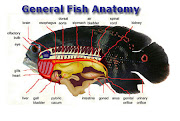 Fish Anatomy For further help in understanding the anatomy of fish (so as to know where the Kidneys are located), please read this article.
Fish Anatomy For further help in understanding the anatomy of fish (so as to know where the Kidneys are located), please read this article.
*Planaria & Detritus Worms in Aquarium
The best in Quartz, Under gravel, and Titanium Submersible Heaters:TMC V2 RO Filter systems; the very best you can buy with TDS meter:
 Reverse Osmosis Aquarium Water Filters; with TDS Meter
Reverse Osmosis Aquarium Water Filters; with TDS Meter
AAP AquaRay Ultra Premium Aquarium LED Lights
Highest in PUR, The ONLY LED with an IP67 rating or higher for water proofing along with a full 5 year warranty to back them up!
Why purchase brands without this rating such as the Finnex, Current, or Fluval only to be essentially placing an electronic light emitting device over your humid aquarium with little or no guarantee? In the long term, you WILL PAY MORE!
ADVERTISEMENT
Labels: Betta, Boby Fish, Dropsey, Dropsy, Fish Kidney Infection, Pinecone Fish, sick fish, Swollen Fish


